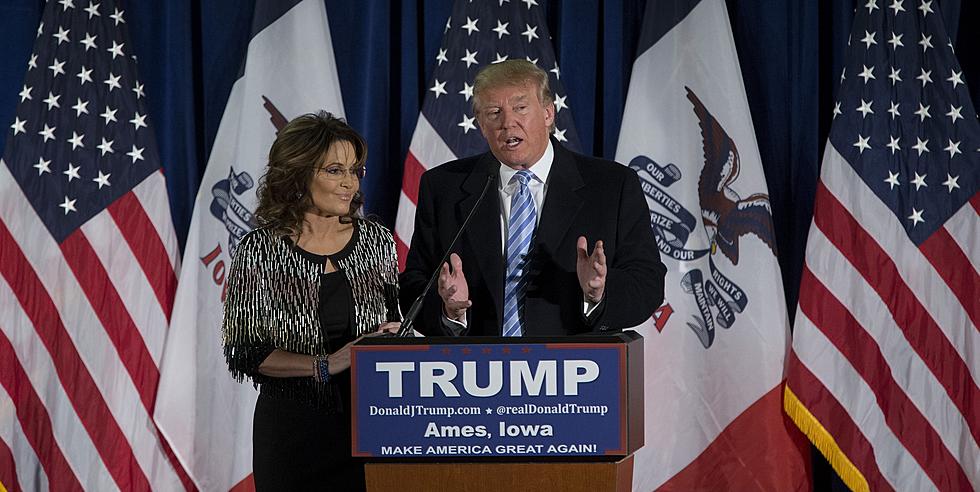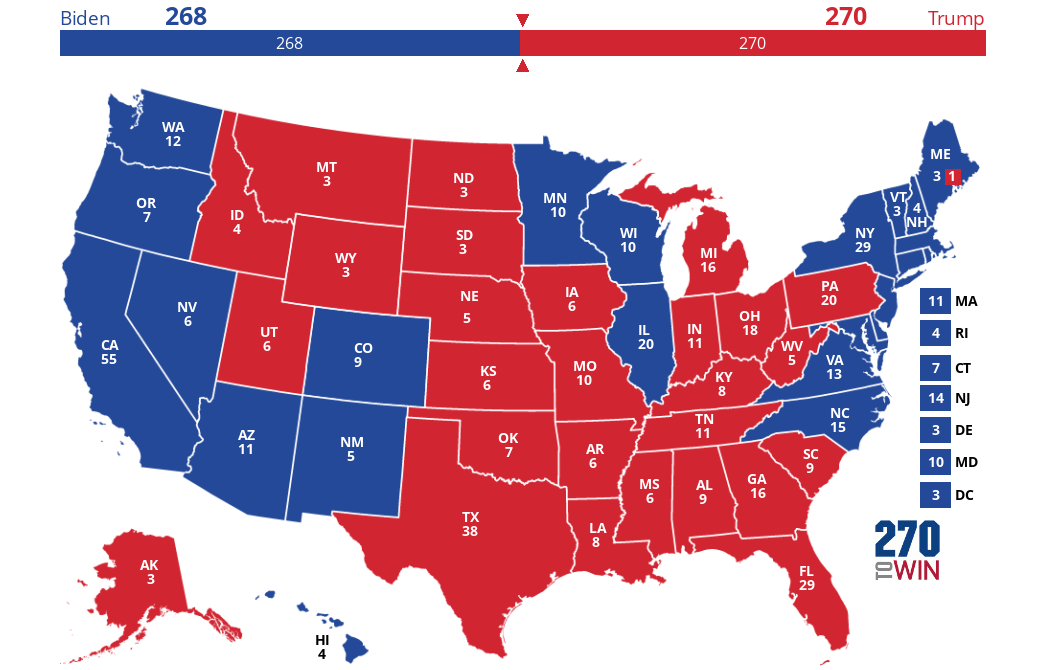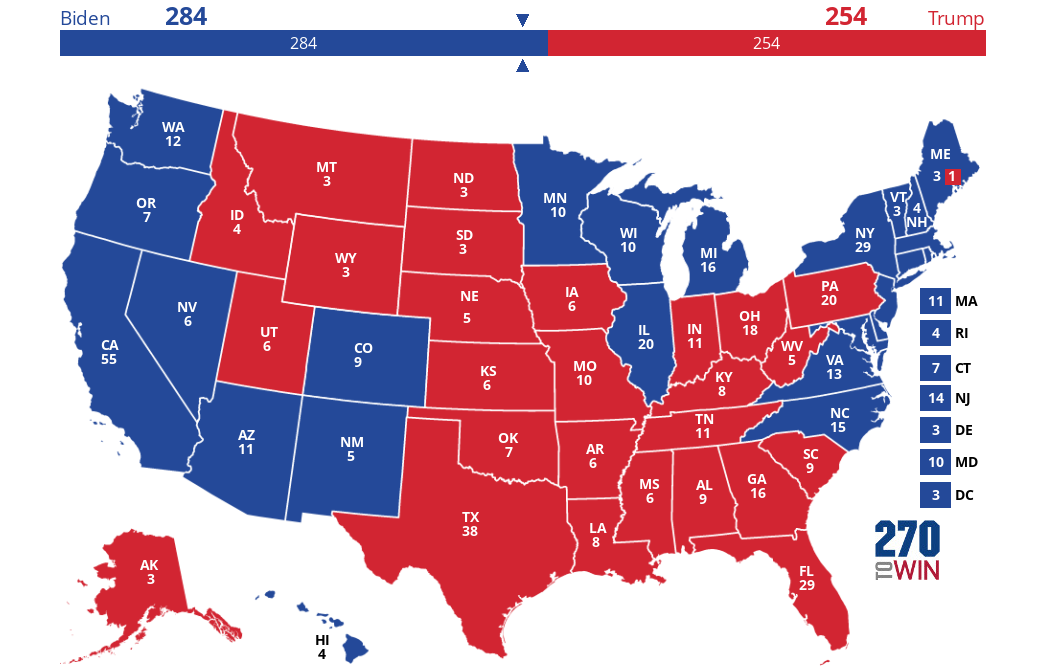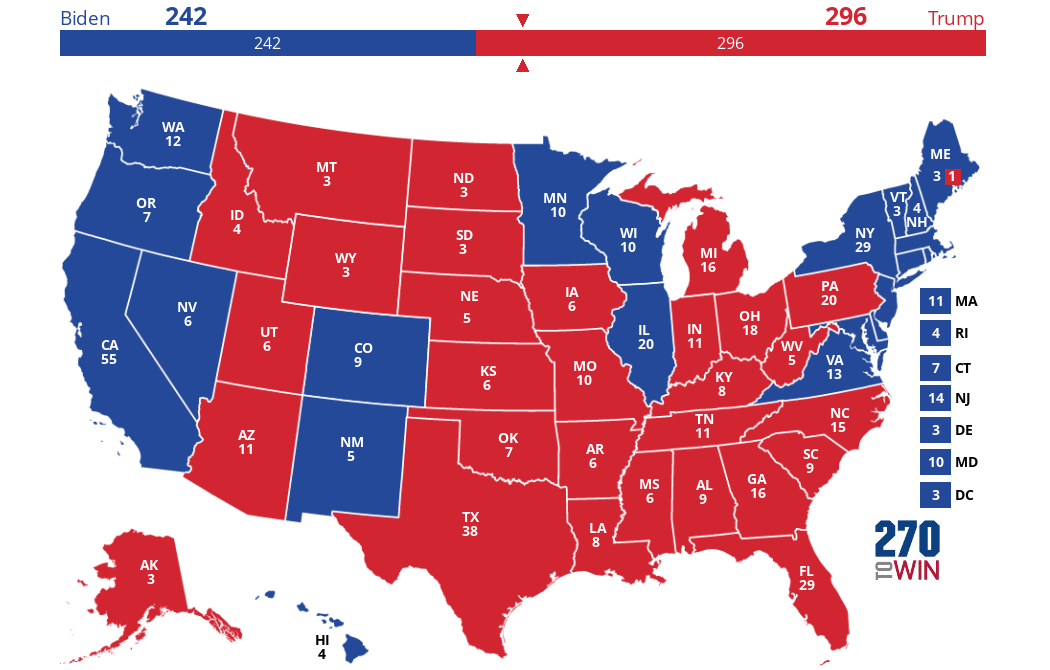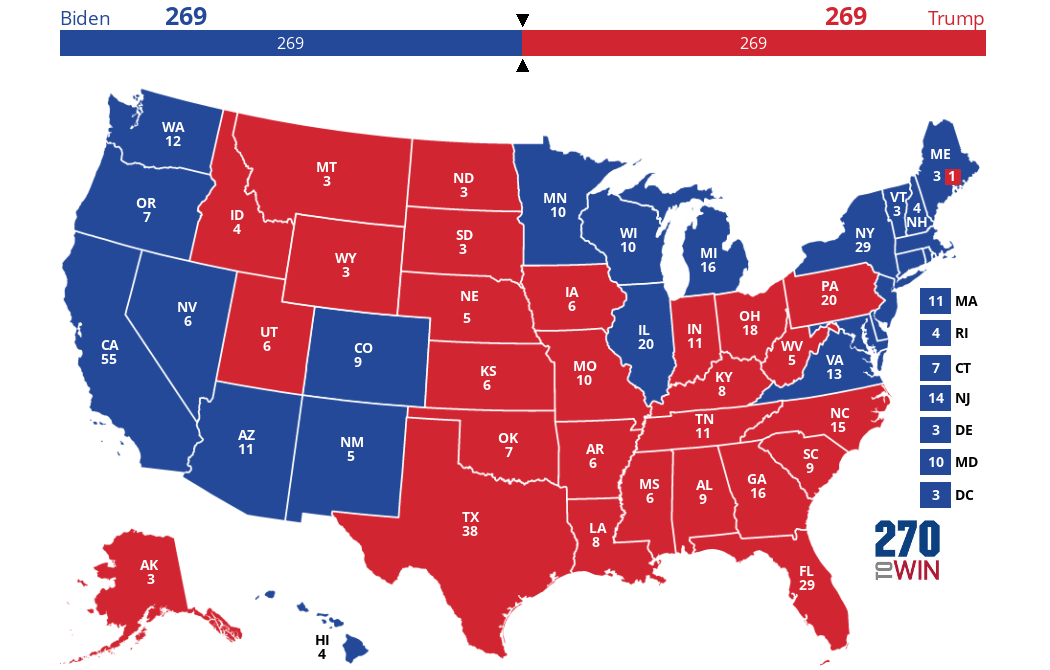
270 To Win: Plotting the Various Scenarios for the Electoral College Including a Trump-Biden Tie

We're less than a week away to Election Day and the uncertainty surrounding the 2020 presidential election brings back memories from four years ago.
Recently, I was on the website 270ToWin.com toying around with scenarios for the electoral college. Specifically, how does President Trump pull out a win? I think it keys in on Michigan and Pennsylvania both going Trump's way again.
It would be by the skin of his teeth, and a faithless elector could tank the win, but here's a scenario in which Trump would beat former Vice President Joe Biden by just two votes (270-268).
[A reminder, if you're not familiar with the rules for the Electoral College, a presidential candidate (and vice president too) need 270 electoral votes to win. Otherwise, when Congress meets in the following January (after the new Congress is sworn in) to officially count the electoral votes, if 270 votes are not garnered by a candidate, then the presidential election would immediately go to a contingent election by the House of Representative, and the vice presidential election would immediately go to a similar vote by the U.S. Senate, under the terms of the Twelfth and Twentieth Amendments. The House votes by state delegation among the top three presidential candidates, and the Senate by individual members, among the top two vice presidential candidates. Here's a Congressional Research Service report on contingent election.]
Here's another possible scenario for election night: a Biden win through the taking of Michigan, Arizona and North Carolina.
Going back to four years ago, on election night in 2016, Donald Trump won 306 electoral votes, Hillary Clinton 232. However, after the electors in the 50 states, plus Washington, D.C., voted, there ended up being seven faithless electors. Trump lost two votes and Clinton lost five votes, making the official electoral college total for 2016: Trump 304, Clinton 227, Colin Powell 3, Bernie Sanders 1, John Kasich 1, Ron Paul 1, and Faith Spotted Eagle 1.
I bring up the faithless electors because they could play a role in the 2020 election.
There is a scenario in play for next week in which President Trump and former Vice President Biden could tie at 269 electoral votes each. You can see it in the next map below:
So there you go, a potential 269-269 tie, which would send the presidential election to the House of Representatives. But once it hits December and the electors gather to cast their ballots, a faithless elector could cross party lines to put a candidate 'over-the-top', through a 270-268 total. Faithless electors could work in the other direction too, syphoning votes away from Trump & Biden, ensuring the showdown in the U.S. House in January 2021.
By the way, if you've never seen the official counting of electoral votes, here it is following the 2016 election during a Joint Session of Congress. As president of the senate, then-Vice President Biden presides. Biden stumbles and bumbles through the minutia of the certification process, and fights through various objections to the count by members of the U.S. House along with protests by people in the House Gallery. The final part of the count begins at the 37:30 mark of the video below.
Have your own idea on how the election will turn out? Post a link to your electoral college map in the comments below, or send us an e-mail to news@kfyo.com with the link to your electoral college map.
Join News/Talk 95.1 & 790, KFYO in Lubbock; News/Talk 1290 in Wichita Falls; and News/Talk 1470 KYYW in Abilene on Tuesday, November 3, for complete coverage of Election 2020. Rob Snyder, Chad Hasty, Ken Corbin, Steve Evans and Robert Pratt will host election coverage from 7pm-Midnight.
More From Talk 103.9 & 1340




